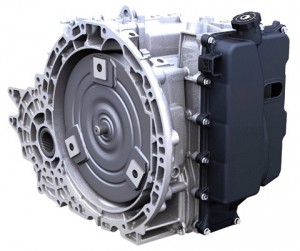Although most people would consider General Motors and Ford to be arch rivals in the automotive marketplace, the largest two of Detroit’s once Big Three manufacturers actually do a lot of research and development work together. Ford Motor Company and General Motors have worked together in the past and both recently announced plans to work together once again on a joint venture that is aimed at developing new nine- and 10-speed automatic transmissions. The research and development on any new and technically groundbreaking automatic transmission can obviously be a costly and time consuming venture, and both manufacturers believe they can save a lot of money by working in concert.
The two manufacturers have worked successfully together on transmission projects in the past. General Motors and Ford worked together on a project that took three years to develop new a new six-speed transmission system back in 2002, and subsequently they jointly produced over 8 million transmissions together based on that work arrangement.
The joint 10-speed automatic transmission development project makes sense for a number of reasons. Transmissions with more gears are more fuel-efficient and they work especially well with the smaller engines in use today that produce far less torque than the giant displacement V-8’s of yesteryear. Beyond just saving cash on the development costs, the joint project should help both manufacturers to meet the new U.S. government mandated fuel-economy standard of 54.5 miles per gallon by 2025 as a typical 10-speed transmission improves fuel economy by some 5% to 10% over that delivered by a six-speed transmission. The joint project might also help both companies get their new transmissions off of the drawing board and into production for use in their new cars and trucks more quickly too. Along with the potential to save millions of dollars in development costs, both companies might also be able to use some of the money they save to make their products more attractive to consumers and more competitive in the marketplace by putting more technology and improvements into user-friendly things like vehicle interiors and entertainment/information systems.
Although both GM and Ford will jointly develop new multi-speed transmissions as they have in the past with the six-speed versions, both firms will likely develop and manufacture their own proprietary gearboxes and create their own software to manage the transmissions too. This arrangement is partially driven by laws that allow different and competing companies to legally develop hardware together as long as they manufacture it and market it separately. As a result, cars from both GM and Ford may benefit from the shared transmission technology with improved performance and fuel economy, but how well each transmission actually performs in the real world will depend heavily on the software programming that controls it too.

